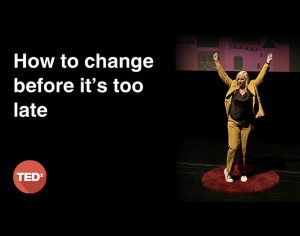“Don’t use PowerPoint,” urges Bill Morrow, founder of angel investor network Angels Den, when asked for advice on how to present to investors. He hears the pitches of entrepreneurs on a weekly basis and his job is to siphon them down to a select few who get to meet potential investors. “Talk to them about the business,” he continues. “Our people want to buy into the person behind the business. Sometimes people hide behind slides but what people want is to see the person behind the ideas.”
Morrow’s advice can be applied to many circumstances, not just the rigours of a funding meeting. Indeed, it harks back to the oft-repeated maxim that ‘people buy from people’. Yet, all too often, entrepreneurs and managers obsess over their visual aids and these become a distraction from the main purpose of the pitch or presentation: to create a business relationship. This is not to say that entrepreneurs should walk into the room without a note in their hand but less is often more.
Andy Atalla, founder of digital marketing agency atom42, says many of the slides he uses are pictorial rather than verbal. “Get the words off your slides,” he recommends. “People cannot take in information if it’s in both verbal and written form at the same time – it causes information overload for the brain. A powerful or striking image is usually much more effective than reams of text.”
Getting prepared
People are much more interested in the person than anything else but many good people crumble under the pressure of a meeting and give a poor account of themselves. Richard Newman, founder and director of UK Body Talk, advises entrepreneurs on how body language affects business success. He says the stress hormone cortisol and adrenaline levels can “wreak havoc” in meetings and advises on a number of simple techniques to reduce these chemicals in the body. He tends to recommend sitting in a relaxed position with arms back and breathing fully out, as well as all the way in. “If we are nervous or anxious then this can be perceived as not having a confidence in what we are selling and people won’t trust us,” he says. “However, you can halve your cortisol levels in just a few minutes by sitting in a relaxed way.”
Once in the meeting, Newman suggests people settle into the room and build a rapport before making a presentation. Asking questions and getting on the same level of the people there is a good way to start. “When people go into meetings, I advise them to ask a lot of questions, which allows them to settle into the meeting and also to start gauging what people want to hear. Find out what their pain points are and what things they really want to achieve,” he suggests.
Facts and figures
A good presentation will always require some details with regards to the main topics under discussion. These might include items such as pricing, costs, charges and savings – all businesses need to know their metrics. But the sales story needs to be understood and applied, rather than simply learnt, parrot fashion. “Don’t memorize a script, but know the information you’re presenting so well that you can stop worrying about yourself and focus instead on the audience and their experience,” says Atalla.
If all is going well, questions will arise as people will be attempting to apply what is being said to their situation. Newman says some people fail to grasp the significance of a question or to understand where the person is coming from. “Handling questions is really important. When someone asks questions, we often make the mistake of repeating ourselves or attempting to re-explain,” he says. “However, if someone asks a question we should see it as an opportunity. They are asking because we have engaged them enough to want to ask a question. You should respond by also asking questions and trying to discover what emotional triggers caused them to ask that question,” says Newman.
And finally…
All pitches and presentations need to end somewhere and, if appropriate, this can be a direct request for business. There’s little point returning to the office and not knowing how the meeting went, so even if you couldn’t get pen to paper, at least the promise of another conversation would be something. As Newman says: “People should end a meeting by gaining some kind of commitment, even if it is only that we speak next week.” ![]()
Share via:


















































